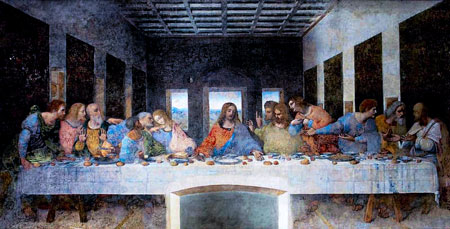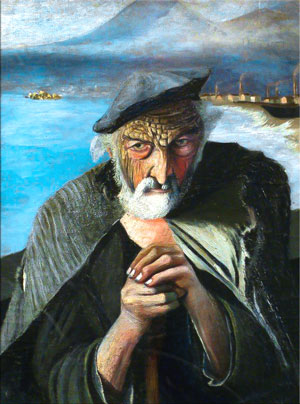
The more mystery in them, the more interest is aroused by the works of famous artists of the past. Of course, millions of people also admire the skill of the painters, amazing colors, the play of shadow and light, the skill of depicting small details. Over the centuries, these details have been studied and interpreted by many art critics from different countries. Some of the secrets of masterpieces of painting have been found and explained, and many secret stories have become clear today. The most amazing secrets of history, creators, and sometimes individual paintings can be hidden in paintings. Let’s dwell on the details that have been revealed and look at these pictures again.
What’s Inside the Art Masterpieces?

The fresco “The Last Supper” by Leonardo da Vinci has been subject of interest and discussion of the researchers with its mystery for more than 5 centuries. The painting has gone through many restorations and discussions – for instance, there is still an unsolved question about an extra hand with a knife. In addition, researchers were able to detect a prediction contained in the “Last Supper” associated with the end of our era and the beginning of the next one in 4006. Besides, by superimposing its translucent mirror reflection on top of the original, the technologists were able to detect two additional figures on the picture and a woman holding a baby standing next to Jesus.
Another hotly contested question among scholars concerned is who was the Leonardo’s muse for Jesus and Judas. For Jesus, he got inspired by the face of the singer in the church choir, but with Judas everything turned out to be very unexpected and interesting. Da Vinci’s search continued for quite some time, and once leaving the tavern, da Vinci saw a drunk man in the ditch. He served as a model for Judas’ image, but after the work was completed, the man remembered that he had

already posed for the artist. You’d figured it right; the face of the same person served as a prototype for both good and evil in the painting!
The theme of good and evil is also traced in the creative work of the Hungarian artist Tivadar Kostka Csontvari. The painter did not gain much fame during his lifetime, but when the real meaning of his “The Old Fisherman” was discovered, it brought him great s
uccess. If you look at the picture, you will see an old man on the canvas. But take a mirror and look at the image of the two halves of the man’s face. And you will see two completely new faces – God and the Devil, which, according to the author’s idea, are inherent in every person.
Controversy over the meanings of the most famous work of the Dutch artist Hieronymus Bosch, “The Garden of Earthly Delights” has not subsided to this day since its creation 500 years ago. This large-scale triptych contains on the right side “Musical Hell”, which depicts sinners tortured in the underworld with musical instruments. However, our interest will concern nothing else than the buttocks of one of the martyrs. They depict sheet music based on which a student at Oklahoma Christian University recorded a modern version called Bosch’s 500-Year-Old Butt Song.
A little clearer is the story of the paintings of Salvador Dali. I’m talking here about “Figure at the Window” (1925), where the muse was the artist’s sister Anna Maria. However, over time, the relationship between brother and sister soured, and over the years, the woman wrote about her brother in a not very good light in her book. Of course, Salvador was furious, and as it turned out, he could not forgive his sister. In 1954 he painted “Young Virgin Autosodomized by Her Own Chastity.” Looking at the external resemblance to the first painting in the pose of a woman, her appearance, the researchers concluded that the second painting is Dali’s revenge for his sister’s book.
And finally, my favorite artist, Vincent van Gogh. Many people know the extravagant artist and his severed ear and that he painted his self-portrait with a bandaged ear. The confusion of art critics was caused by the fact that Van Gogh depicted himself with a bandage on his right ear in the painting, while he injured his left. The whole snag was in the perception of the artist – he drew himself from the mirror.
Another interesting fact in the work of Van Gogh is about his workshop in the south of France, where he spent his not the best times, not accepted by French artists and critics. It was here that he painted his Bedroom at Arles in disturbing yellow tones. As it turned out, at that time, the artist was taking a cure for epilepsy, which caused serious changes in Vincent’s perception of color.
I hope it was interesting for you to read my article, and perhaps experts will reveal many more secrets associated with the paintings, which I will definitely write about.





